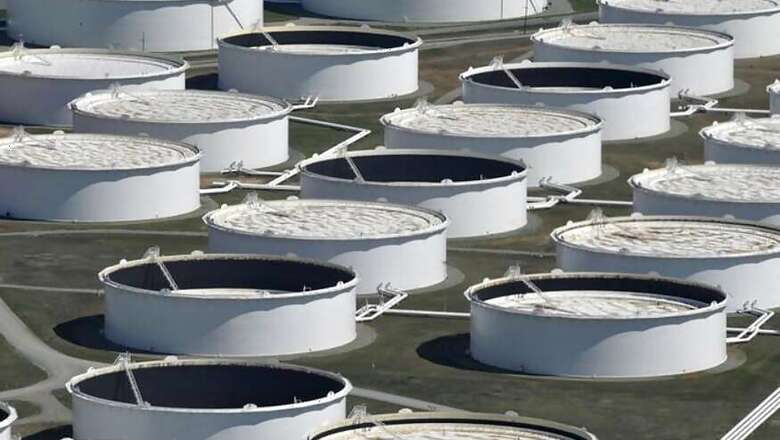
views
Singapore: Oil prices rose on Tuesday after Libya declared force majeure on some of its supplies, while an ongoing Canadian outage lifted US crude to levels not seen since late 2014.
US West Texas Intermediate (WTI) crude futures were at $74.73 at 0724 GMT, up 79 cents, or 1.1 percent, from their last settlement. They earlier marked their strongest since November 2014 at $74.84 a barrel.
Traders said this was largely due to an expected fall in North American fuel inventories following the 350,000 barrel per day (bpd) Syncrude outage in Canada.
Outside North America, Brent crude oil futures were at $77.77 per barrel, up 44 cents, or 0.6 percent.
"Oil bulls seem to have returned after Libya suspended oil exports from two key ports," said Hussein Sayed, chief market strategist at futures brokerage FXTM.
"If Libya's oil doesn't return fast to the market it will be an important test to OPEC's spare capacity, especially given that output from Venezuela and Iran is expected to fall significantly in the next couple of months," he added.
The Organization of the Petroleum Exporting Countries (OPEC) saw June output at 32.32 million bpd, a Reuters survey showed on Monday, up 320,000 bpd from May. The June total is the highest since January 2018.
The UAE's Abu Dhabi National Oil Co (ADNOC), a major producer within OPEC, said on Tuesday it is able to increase production by several hundred thousand bpd if needed.
However, Libya's National Oil Corporation (NOC) declared force majeure on loadings from Zueitina and Hariga ports on Monday, resulting in 850,000 bpd of supplies being disrupted.
Demand Slowdown
Outside the supply-side, a slowdown in demand is emerging, potentially ending years of consecutive records.
"US petroleum demand growth slowed significantly to 385,000 bpd year-on-year in April, compared with a growth of more than 730,000 bpd year-on-year in Q1," Barclays bank said, adding that this was mostly due to higher fuel prices.
In Asia, the world's top oil consuming region, seaborne oil imports have been falling since May, as higher costs turned off consumers and as the escalating trade dispute between the United States and China starts to impact the economy.
Chinese stocks went into a tail spin on Tuesday as turbulence gripped equity markets in Asia, which sank to nine-month lows as investors feared the Sino-US trade row could derail a rare period of synchronized global growth.
"There are ... signs that growth in China has slowed in recent months, particularly infrastructure spending by local governments. I would assume that infrastructure investment is quite energy intensive, so perhaps that had a knock-on effect to oil demand," said Frederic Neumann, Co-Head of Asian Economic Research at HSBC in Hong Kong.
"At this stage, however, it appears more that growth in Asia is softening, rather than decelerating sharply," he added.




















Comments
0 comment